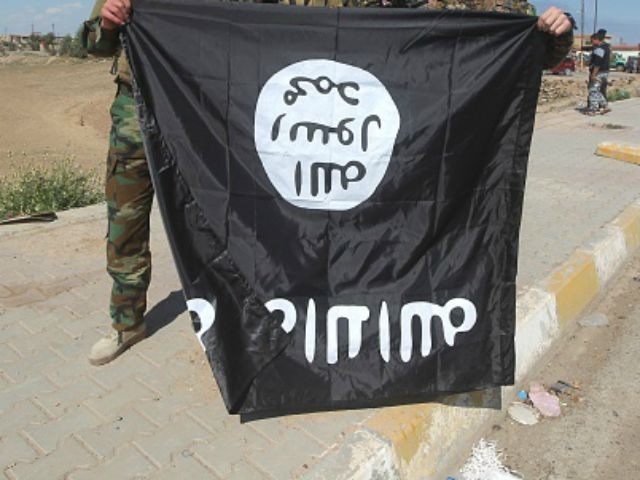A study documenting every piece of Arabic-language Islamic State (ISIS) propaganda released in one month finds that more than half of the materials sell Muslims on the idea of a Sharia utopia, its trademark bloody video a minority of its media output.
Quilliam, a UK-based think tank, has released as study Tuesday. Quilliam has been active since 2008 and has received heavy criticism from many for its condemnation of Israel’s military operation against Hamas that year, as well as challenging public figures raising the alarm on the rise of Islamic extremism in Europe.
The study documents 1,146 pieces of propaganda, all released between July 17 and August 15, 2015: the Islamic month of Shawwal. It found that an overwhelming number of these pieces of propaganda, described as “photo essays, videos, audio statements, news bulletins, posters, theological essays, and so on,” focus on civilian life within the Islamic State, attempts to persuade Muslims the world over to leave their lives at home and move into a viable Islamic State.
The study, conducted by senior researcher Charlie Winter, also notes that the output of propaganda by Islamic State outlets is prodigious–and severely underestimated by Western researchers and governments. “What did surprise me was the volume of it,” he told UK newspaper The Independent. “We’re talking about just under 40 separate units of propaganda a day.”
The study found that the concept of “utopia” is prevalent in 52.57% of the propaganda “events” documented in the month of Shawwal. In contrast, “brutality”–gory videos of alleged spies, Shias, and other undesirables being tortured and murdered in gruesome ways–accounted for only 2.13% of the propaganda events. Second only to “utopia” was “war”–propaganda proclaiming great triumphs by ISIS’s terrorists, or showing the daily life of a jihadi in Syria and Iraq, or (in some instances) images of jihadis launching rockets with no visible enemy on the receiving end. These, Winter contends, are faked to make it appear that ISIS’s jihadis are constantly in action, even when there may not have been any eventful terrorism committed on a given day. “War” accounts for 37.12% of the terrorist propaganda studied.
Winter notes in the study that he used Twitter hashtags, in addition to official outlets like the Al-Hayat Media network, to compile a comprehensive list of propaganda pieces. He relied on Arabic hashtags–not users, he writes, because those accounts are often deleted as soon as Twitter finds them–which allowed him to view this propaganda through a more domestic window.
Many of ISIS’s most gruesome productions are either recorded in or translated into English; they intend to attract an American audience. 9/11 anniversary videos, English-language Dabiq magazine, among others, prove this. Only gory videos intended for a domestic audience remain in Arabic, and these often depict the most immediate threat to ISIS–not Westerners, but foreigners of neighboring nations or alleged “spies” within the Caliphate confines. This is true of the video depicting Jordanian pilot Mu’ath al-Kaseasbeh being burned alive in a cage (warning: graphic images), as it is of video showing a child executing a “spy,” and one of another four Shiite “spies” being burned alive. Winter writes:
The intended target audiences for its ultraviolence are decidedly more regional than they have been previously. It seems that fostering international infamy could now be secondary to intimidating its population with a view to discouraging rebellion and dissent.
This may also be true of the majority of its propaganda, in which ISIS asserts that it is a viable state, not merely the world’s wealthiest terrorist organization. Winter also states:
Photo reports and videos emerge on a daily basis showing the group administering its civilian population, cleaning the streets, fitting electricity pylons, fixing sewage systems, purifying water, collecting blood donations, providing healthcare and education.
Most recently, ISIS released images on social media of new “theme parks” in Mosul and Raqqa, its two largest captured cities, just as the international community turned its eye to the Russian government’s air campaign against the enemies of Syrian dictator Bashar al-Assad.
Immediately after the fall of Mosul to the Islamic State in June 2014, reports surfacing from within the city warned that ISIS would not be able to sustain itself if it could not attract educated, civilian Muslims to the “Caliphate.” The Islamic State intends to be a socialist state, where the government provides most basic civilian needs. It would need doctors, engineers, skilled manufacturers, and, most of all, women to create a viable state. Jihadi videos do little to attract such members of society.
The organization, thus, began to release images, videos, and articles highlighting Islamic State honeymoons, its parks and schools for children, and its allegedly abundant food. ISIS doctors featured in videos appeared to showcase advanced medical technology. Winter notes in his study that the target audience for many of these propaganda pieces, as well, are not Westerners. This propaganda “is also used to allay domestic concerns and convince others in the region of the benefits of migration to what is portrayed as a land of plenty”–that is to say, Muslims from Lebanon to Kyrgyzstan are being courted to move to Raqqa, not just Muslims in London or Detroit.
Ultimately, Winter recommends not a “counter-narrative” approach, but an alternative narrative. “The ‘Caliphate’ is a comprehensively designed and carefully branded operation, and we must therefore seek to counter it in a similarly complex manner,” approaching its civilian persuasive pieces, as well as its jihadi propaganda.
Read the full study here.

COMMENTS
Please let us know if you're having issues with commenting.